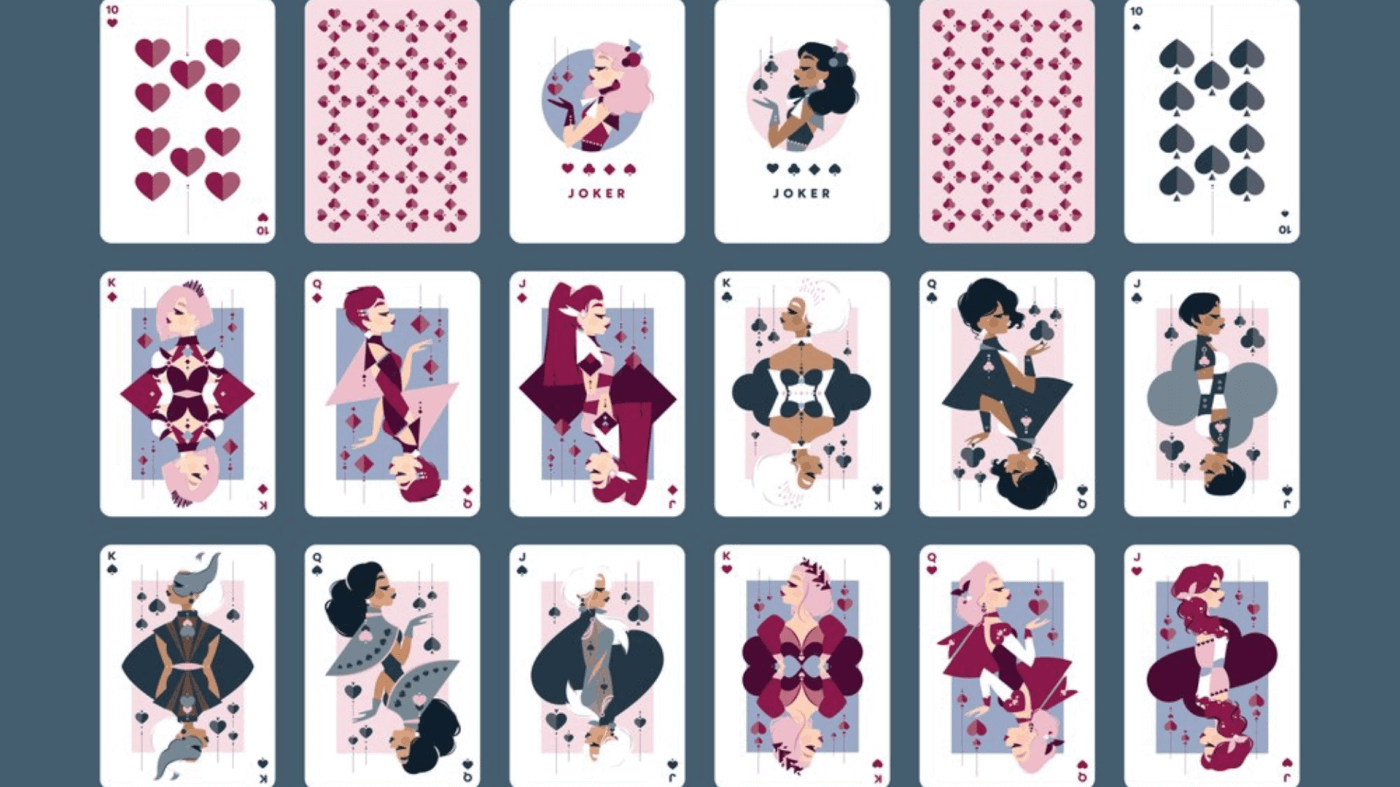Custom playing cards are a fun and unique way to promote your brand or celebrate a special occasion. Whether you want to create a custom deck for your business, wedding, or personal use, ordering custom playing cards can be a daunting task. Here's a step-by-step guide to help you through the process.
Choose a material
When it comes to printing playing cards, there are several materials that can be used. Two popular options are paper card stock with a weight of 250gsm and paper PVC with a weight of 380gsm. Let's take a closer look at each material:
Paper card stock: Paper card stock is a high-quality paper material that is commonly used for printing playing cards. This material is often coated to provide a smooth surface for printing, and a weight of 250gsm is suitable for most playing cards.
Paper card stock can be printed using a variety of methods, including offset printing and digital printing. It is also a cost-effective option for printing playing cards.
Paper PVC: Paper PVC is a synthetic material that combines the durability of plastic with the printability of paper. This material is often used for playing cards that require extra durability, such as those used in outdoor settings or for games that involve water or moisture.
A weight of 380gsm is suitable for most paper PVC playing cards. Paper PVC can be printed using a variety of methods, including screen printing and digital printing. However, it is a more expensive option compared to paper card stock.
When choosing between paper card stock and paper PVC for playing cards, consider the intended use of the cards and the desired level of durability. If the cards will be used in outdoor settings or for games that involve moisture, paper PVC may be the better option.
However, if the cards will be used primarily indoors, paper card stock may be a more cost-effective option. Additionally, consider the printing method you plan to use and whether each material is compatible with that method.
Choose a printing method
When it comes to customizing playing cards, there are several printing options available. Let's take a closer look at some of the most popular print types:
Offset printing: Offset printing is a high-quality printing method that uses plates to transfer the ink onto the paper or card stock. This method is ideal for printing large quantities of playing cards, as it is cost-effective and produces high-quality prints with precise details.
Digital printing: Digital printing involves using a digital file to print directly onto the paper or card stock. This method is ideal for printing smaller quantities of playing cards or for printing custom designs with variable data. Digital printing produces high-quality prints with sharp details and vibrant colors.
Screen printing: Screen printing involves using a stencil to transfer the ink onto the paper or card stock. This method is ideal for printing custom designs with vibrant colors and a matte finish. Screen printing is also a durable printing method that is ideal for printing on plastic or other non-paper materials.
Letterpress printing: Letterpress printing involves pressing ink into the paper or card stock using a metal plate with raised letters or designs. This method produces a unique, tactile finish that is ideal for high-end playing cards with intricate designs.
Foil stamping: Foil stamping involves pressing a metallic or colored foil onto the paper or card stock using heat and pressure. This method produces a shiny, reflective finish that is ideal for high-end playing cards with metallic or shiny designs.
Decide on the size
Custom playing cards can come in a variety of sizes, depending on the specific requirements of the project. However, there are a few common sizes that are widely used in the industry. Here are some of the most popular custom playing card sizes:
Poker size: This is the most common size for playing cards, and it measures 2.5 inches by 3.5 inches (63.5mm x 88.9mm)
Bridge size: This size is slightly narrower than the poker size, measuring 2.25 inches by 3.5 inches (57mm x 89mm)
Tarot size: This size is larger than the poker size, measuring 2.75 inches by 4.75 inches (70mm x 121mm). It is commonly used for tarot cards or oracle cards.
Mini size: This is a smaller size that is popular for travel games or novelty decks. It measures 1.75 inches by 2.5 inches (44mm x 63.5mm)
Jumbo size: This is a larger size that is sometimes used for novelty or promotional decks. It measures 3.5 inches by 5.75 inches (89mm x 146mm)
Choose the card finish
Linen Finish: This finish adds a textured feel to the cards, making them easier to shuffle and handle. The texture resembles the weave of linen fabric and helps to prevent smudging or sticking of the cards. This finish is ideal for games that require frequent shuffling.
Smooth Finish: This finish gives the cards a sleek and glossy appearance. It provides a smooth surface that makes the cards easy to shuffle and deal. The smooth finish also enhances the colors and designs of the cards, making them more vibrant and eye-catching.
Plastic Coating: This finish adds a layer of plastic coating to the cards, making them more durable and resistant to wear and tear. The plastic coating also makes the cards waterproof and easy to clean, which is ideal for outdoor games or games that involve food and drinks.
UV Coating: This finish adds a layer of ultraviolet coating to the cards, which enhances the colors and designs of the cards and protects them from fading or discoloration. The UV coating also makes the cards more durable and resistant to scratches, which is ideal for frequent use.
Matte Finish: This finish adds a non-glossy, dull appearance to the cards. It provides a smooth surface that makes the cards easy to shuffle and deal, but also reduces glare and reflection from light sources. The matte finish is ideal for games that are played in low-light conditions.
Metallic Finish: This finish adds a metallic sheen to the cards, giving them a unique and luxurious look. The metallic finish can be added to specific parts of the card, such as the edges or the designs, to enhance their appearance and make them stand out.
Contact our team
The easiest way to get started is to get in touch with our team about your idea through these links:
Our social links:









